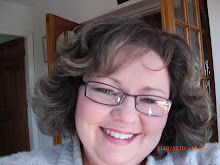Tomas O’Crohan’s book, The Islandman, was first written in Irish in 1926 and translated into English 3 years later. It tells of life on the Blasket islands off the coast of Kerry. An Irish only speaking population, the last of the islanders were evacuated to the mainland in 1953.O’Crohan himself lived from 1856-1937 and he gives a detailed, vivid portrait of life on the island during the end of the 19th century and the beginning of the 20th. Despite the fact that it was written so long ago, it is a book that is easy to read. 
As I sidebar, I must admit to a love of all things of the Dingle Peninsula and its off shore islands. And therefore, I read anything I can, past or present, regarding the surrounding area. I’ve read Peig Sayers voluntarily and I’m a huge fan of the Antarctic explorer, Tom Crean from Anascaul.
That being said, I found O’Crohan’s book to be much more entertaining than that of Peig Sayers.
The insight into the way of life on the island- which is no more- is priceless. There were no shops on the island and the most startling revelation of all was the fact that all the animals (cow, asses, cats and dogs) were brought into the house at night. His sisters had to climb up onto the roof in the morning to collect the eggs as the hens had roosted in the thatch. Formal education was dodgy at best: he didn’t start school until he was 10 and there was a whole gap year when the teacher returned to the mainland to get married and it took a year to find a replacement. They made a living by fishing and going to the market in Dingle. They also benefited from shipwrecks when cargo washed ashore. It was interesting to read how they salvaged the wheat cargo from the sea by boiling the salt out of it and then drying it in front of the fire. When a cargo a tea landed ashore, they had no idea what it was so they fed it to the pigs and one woman used it to dye her petticoats- at that point tea had not been introduced to the island. The sea by its very nature was unforgiving.
At 22 he married- a marriage arranged by his sister. Together they had 10 children and there was a lot of sorrow: 2 died from measles, 1 fell off a cliff, and another drowned trying to save someone else. All of this appears to have accelerated the path to the grave for his wife but Tomas soldiered on.
At the end, he writes: “I have written minutely of much that we did, for it was my wish that somewhere there should be a memorial of it all, and I have done my best to set down the character of the people about me so that some record of us might live after us, for the like of us will never be again.”
These people are no more and there is an element of sadness for that which is gone.

As I sidebar, I must admit to a love of all things of the Dingle Peninsula and its off shore islands. And therefore, I read anything I can, past or present, regarding the surrounding area. I’ve read Peig Sayers voluntarily and I’m a huge fan of the Antarctic explorer, Tom Crean from Anascaul.
That being said, I found O’Crohan’s book to be much more entertaining than that of Peig Sayers.
The insight into the way of life on the island- which is no more- is priceless. There were no shops on the island and the most startling revelation of all was the fact that all the animals (cow, asses, cats and dogs) were brought into the house at night. His sisters had to climb up onto the roof in the morning to collect the eggs as the hens had roosted in the thatch. Formal education was dodgy at best: he didn’t start school until he was 10 and there was a whole gap year when the teacher returned to the mainland to get married and it took a year to find a replacement. They made a living by fishing and going to the market in Dingle. They also benefited from shipwrecks when cargo washed ashore. It was interesting to read how they salvaged the wheat cargo from the sea by boiling the salt out of it and then drying it in front of the fire. When a cargo a tea landed ashore, they had no idea what it was so they fed it to the pigs and one woman used it to dye her petticoats- at that point tea had not been introduced to the island. The sea by its very nature was unforgiving.
At 22 he married- a marriage arranged by his sister. Together they had 10 children and there was a lot of sorrow: 2 died from measles, 1 fell off a cliff, and another drowned trying to save someone else. All of this appears to have accelerated the path to the grave for his wife but Tomas soldiered on.
At the end, he writes: “I have written minutely of much that we did, for it was my wish that somewhere there should be a memorial of it all, and I have done my best to set down the character of the people about me so that some record of us might live after us, for the like of us will never be again.”
These people are no more and there is an element of sadness for that which is gone.


No comments:
Post a Comment